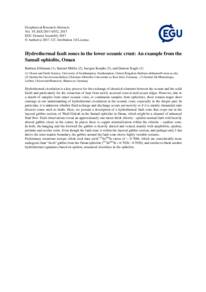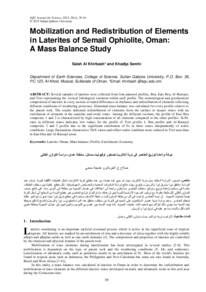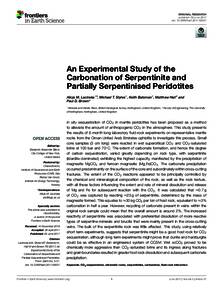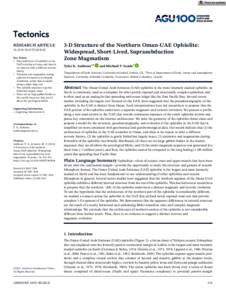Document
Hydrothermal fault zones in the lower oceanic crust : an example from Wadi Gideah, Samail ophiolite, Oman.
Identifier
DOI: 10.1016/j.lithos.2018.09.008
Source
Lithos. v. 323, p. 103-124
Contributors
Country
Netherlands.
Publisher
Elsevier B. V.
Gregorian
2018-12-15
Language
English
English abstract
Hydrothermal circulation is a key process for chemical and isotopic exchange between the solid Earth and oceans, and for the extraction of heat from newly accreted crust at mid-ocean ridges. However, due to a dearth of samples from intact oceanic crust, or continuous sample suites from ophiolites, there remain major shortcomings in our understanding of hydrothermal circulation in the oceanic crust, especially in the lower plutonic crust. In particular, it remains unknown whether fluid recharge and discharge occurs pervasively or if it is mainly channelled within discrete zones such as faults. Here, we describe a hydrothermally-altered fault zone that crops out in the Wadi Gideah in the layered gabbro section of the Samail ophiolite of Oman. A one metre thick normal fault comprising deformed chlorite ± epidote fault rock with disseminated chalcopyrite and pyrite, offsets gently dipping layered olivine gabbros. The chlorite-rich fault rocks surround strongly altered clasts of layered gabbro, 50 to 80 cm in size. Layered gabbros in the hanging wall and the footwall are partially altered and abundantly veined by epidote, prehnite, laumontite and calcite veins. In the wall rocks, igneous plagioclase (An82±2%) is partially altered towards more albitic compositions (An75-81), and chlorite + tremolite partially replaces plagioclase and clinopyroxene. Clinopyroxene is moderately overgrown by Mg-hornblende. Whole rock mass change calculations show that the chlorite-rich fault rocks are enriched in Fe, Mn, H2O + CO2, Co, Cu, Zn, Ba, and U, but have lost significant amounts of Si, Ca, Na, Cr, Ni, Rb, Sr, Cs, light rare earth elements (LREE), Eu, and Pb. Gabbro clasts within the fault zone as well as altered rock from the immediate hanging wall show enrichments in Na, volatiles, Sr, Ba and U and depletions of Si, Ti, Al, Fe, Mn, Mg, Ca, Cu, Zn, Rb, Cs, LREE, and Pb. Chlorite thermometry suggests a formation temperature of 300–350 °C for the fault rock and based on the Si loss and solubility of silica in hydrothermal fluids the intensity of alteration requires a fluid to rock ratio of up to 900:1. Strontium isotope whole rock data of the fault rock yield 87Sr/86Sr ratios of 0.7043–0.7048, which is considerably more radiogenic than fresh layered gabbro from this locality (87Sr/86Sr = 0.7030–0.7033), and similar to black smoker hydrothermal signatures based on epidote, measured from epidote veins in the footwall and elsewhere in the ophiolite (87Sr/86Sr = 0.7043–0.7051). Altered gabbro clasts within the fault zone show similar values with 87Sr/86Sr ratios of ~0.7045–0.7050. In contrast, the hanging and footwall gabbros display values only slightly more radiogenic than fresh layered gabbro. The elevated strontium isotope composition of the fault rock and clasts together with the observed secondary mineral assemblages and calculated mass changes strongly supports the intense interaction with seawater-derived up-welling hydrothermal fluids, active during oceanic spreading. Assuming that such a fault zone is globally representative of faulting in the lower crust, an extrapolation of our results from mass change calculations to elemental fluxes, shows a significant contribution to the global hydrothermal budgets of Si, Ti, Fe, Mn, Mg, Ca, H2O, Cu, Zn, Sr and Cs.
ISSN
0024-4937
Category
Journal articles




